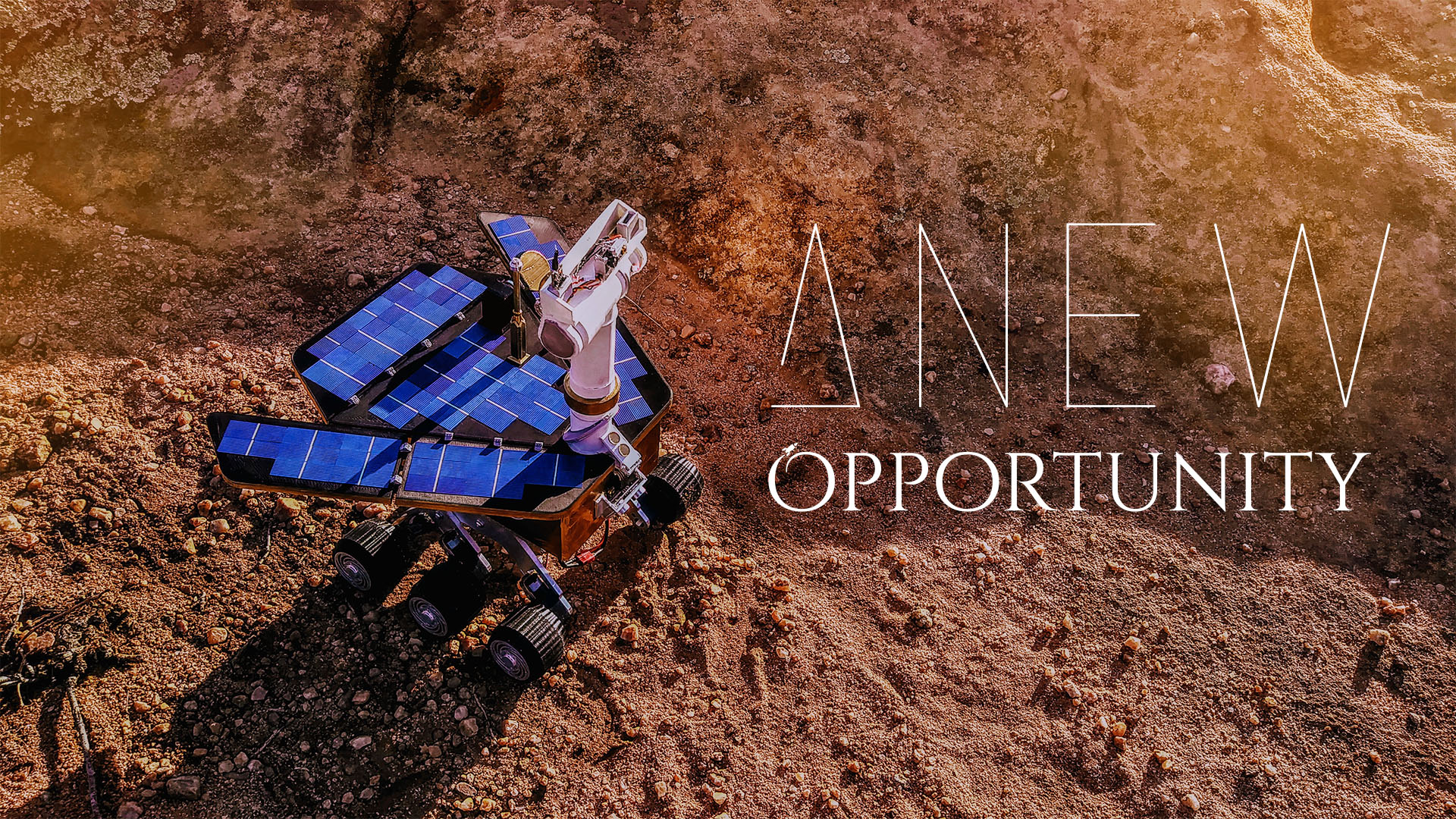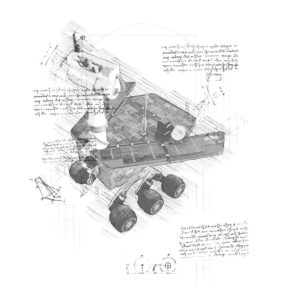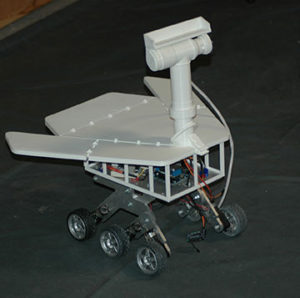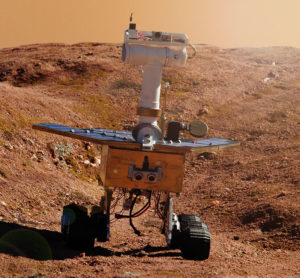
Mars Robotic Rover:
A New Opportunity
In July of 2003, NASA and JPL launched the original Mars Opportunity Rover. Five months later, it landed on the red planet on the Meridiani Planum, a vast plain nears Mars' equator. The original mission was only scheduled to last for 90 days, but 14 years later, Opportunity was actively exploring the landscape and sending photos back to Earth.
 When Silverfern Productions was tasked with creating a remote drivable rover that incorporated design elements from the original Opportunity rover, we jumped at the challenge.
When Silverfern Productions was tasked with creating a remote drivable rover that incorporated design elements from the original Opportunity rover, we jumped at the challenge.
There was just one other thing... it had to be "cute."
Our designers began by examining what made Opportunity so iconic, from the prominent tower to the unique solar deck. Next, we assembled all of the sensors and cameras, tested the drive system and the wireless communication system.
Finally, each piece was 3D modeled and printed in our workshop before assembly.
 The final rover can be controlled remotely from a laptop up to 1/4 mile away or drive autonomously with collision detection. A camera mounted on top of the tower sends continuous video from the perspective of the rover and the tower can rotate 180 degrees and tilt up or down 90 degrees. A color adjustable LED near the camera allows the rover to take photos in different lighting conditions and a red laser allows visitors to see where the camera is pointed.
The final rover can be controlled remotely from a laptop up to 1/4 mile away or drive autonomously with collision detection. A camera mounted on top of the tower sends continuous video from the perspective of the rover and the tower can rotate 180 degrees and tilt up or down 90 degrees. A color adjustable LED near the camera allows the rover to take photos in different lighting conditions and a red laser allows visitors to see where the camera is pointed.
That's right. It has a laser.

With a run time of several hours and quick swap batteries, it's easy to keep the rover up and running. Any replacement parts can quickly be printed and swapped out.
In 2018, a sandstorm covered the solar panels on the Opportunity rover and forced it to power down. Scientists and fans watch eagerly, hoping that martian winds will clear the dust and allow Opportunity to continue its distant broadcast. In the meantime, a much closer rover broadcasts its own exploration.
It seemed only fitting to name it a "New Opportunity."
Testing the traction on loose gravel.
The solar panels on top of the rover.
Nearly all of the parts on the rover where custom 3D printed.
Ultrasonic sensors allow the rover to detect objects in its way and adjust course to avoid them.
The rover features a live video feed, full RGB LED and a laser.
Testing the rover on uneven terrain.
The rover greets the first rays of sun.







